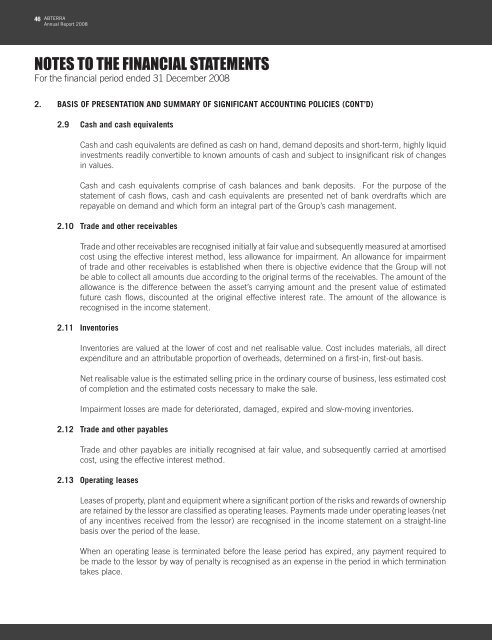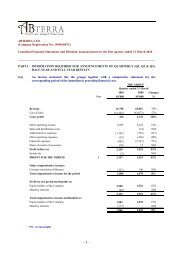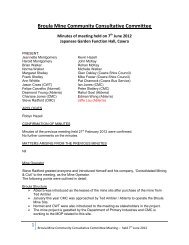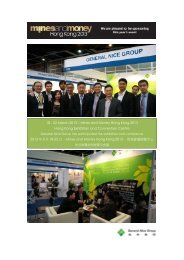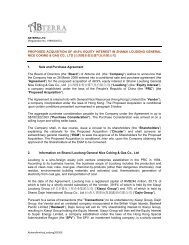AR for 2008 - Abterra
AR for 2008 - Abterra
AR for 2008 - Abterra
You also want an ePaper? Increase the reach of your titles
YUMPU automatically turns print PDFs into web optimized ePapers that Google loves.
46 ABTERRA<br />
Annual Report <strong>2008</strong><br />
NOTES TO THE FINANCIAL STATEMENTS<br />
For the financial period ended 31 December <strong>2008</strong><br />
2. BASIS OF PRESENTATION AND SUMM<strong>AR</strong>Y OF SIGNIFICANT ACCOUNTING POLICIES (CONT’D)<br />
2.9 Cash and cash equivalents<br />
Cash and cash equivalents are defined as cash on hand, demand deposits and short-term, highly liquid<br />
investments readily convertible to known amounts of cash and subject to insignificant risk of changes<br />
in values.<br />
Cash and cash equivalents comprise of cash balances and bank deposits. For the purpose of the<br />
statement of cash flows, cash and cash equivalents are presented net of bank overdrafts which are<br />
repayable on demand and which <strong>for</strong>m an integral part of the Group’s cash management.<br />
2.10 Trade and other receivables<br />
Trade and other receivables are recognised initially at fair value and subsequently measured at amortised<br />
cost using the effective interest method, less allowance <strong>for</strong> impairment. An allowance <strong>for</strong> impairment<br />
of trade and other receivables is established when there is objective evidence that the Group will not<br />
be able to collect all amounts due according to the original terms of the receivables. The amount of the<br />
allowance is the difference between the asset’s carrying amount and the present value of estimated<br />
future cash flows, discounted at the original effective interest rate. The amount of the allowance is<br />
recognised in the income statement.<br />
2.11 Inventories<br />
Inventories are valued at the lower of cost and net realisable value. Cost includes materials, all direct<br />
expenditure and an attributable proportion of overheads, determined on a first-in, first-out basis.<br />
Net realisable value is the estimated selling price in the ordinary course of business, less estimated cost<br />
of completion and the estimated costs necessary to make the sale.<br />
Impairment losses are made <strong>for</strong> deteriorated, damaged, expired and slow-moving inventories.<br />
2.12 Trade and other payables<br />
Trade and other payables are initially recognised at fair value, and subsequently carried at amortised<br />
cost, using the effective interest method.<br />
2.13 Operating leases<br />
Leases of property, plant and equipment where a significant portion of the risks and rewards of ownership<br />
are retained by the lessor are classified as operating leases. Payments made under operating leases (net<br />
of any incentives received from the lessor) are recognised in the income statement on a straight-line<br />
basis over the period of the lease.<br />
When an operating lease is terminated be<strong>for</strong>e the lease period has expired, any payment required to<br />
be made to the lessor by way of penalty is recognised as an expense in the period in which termination<br />
takes place.


